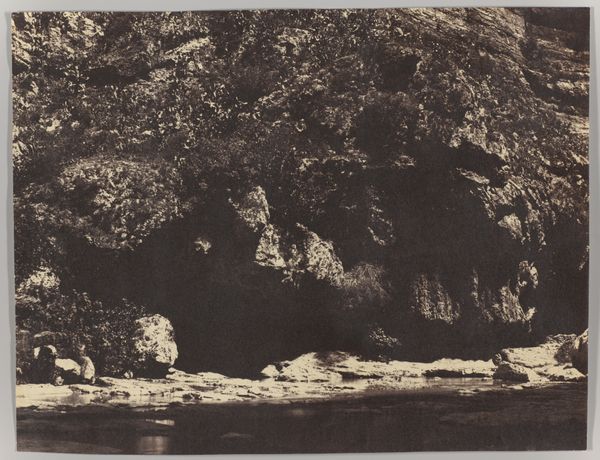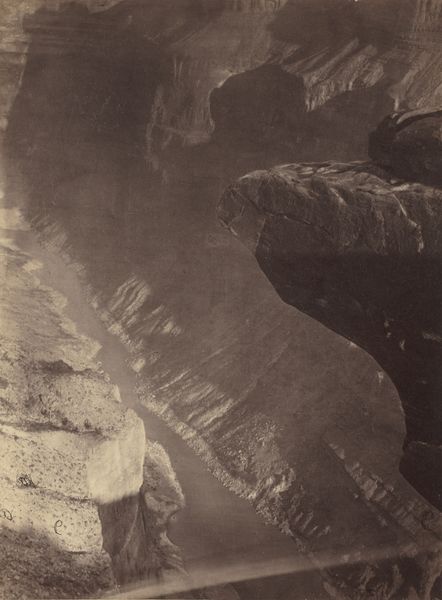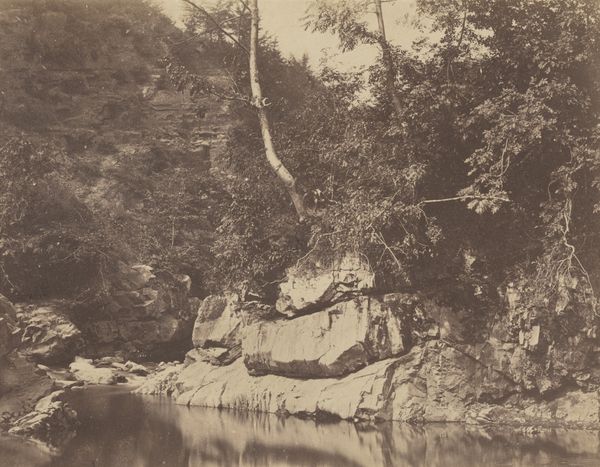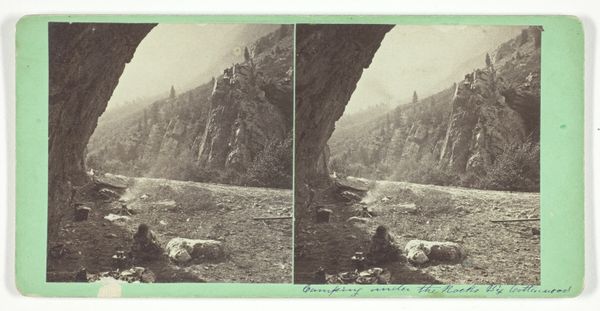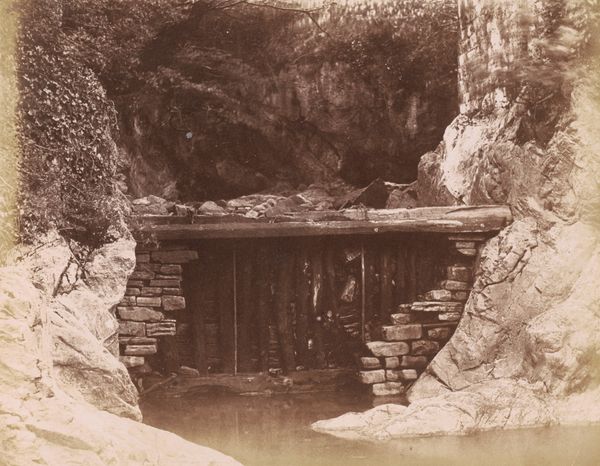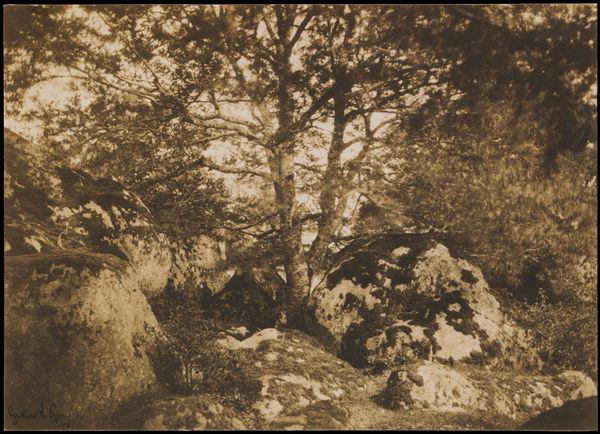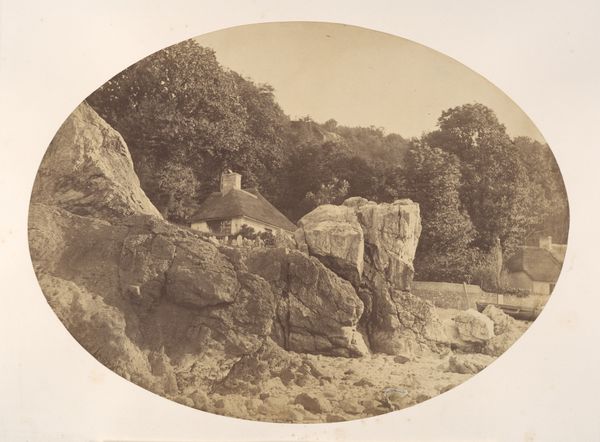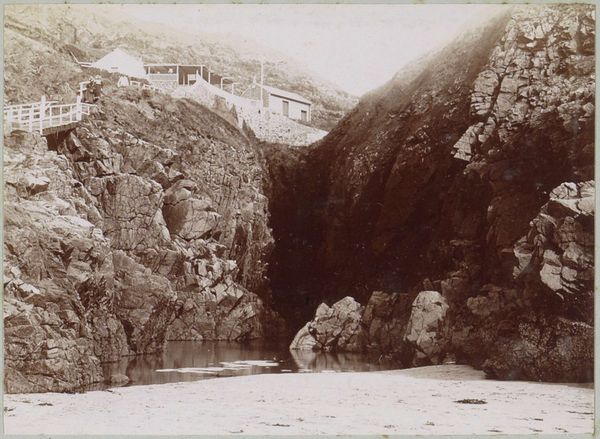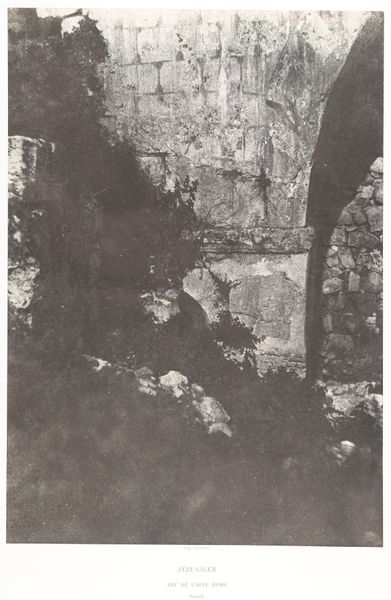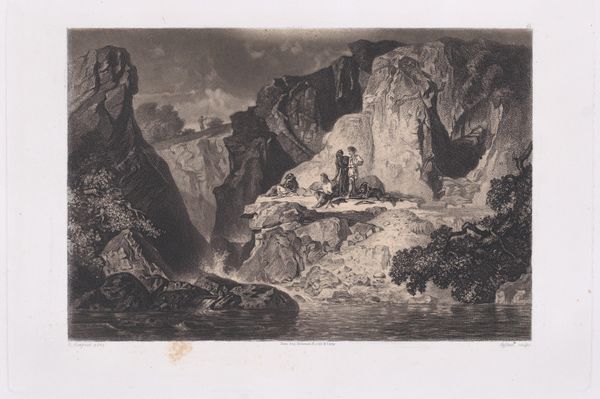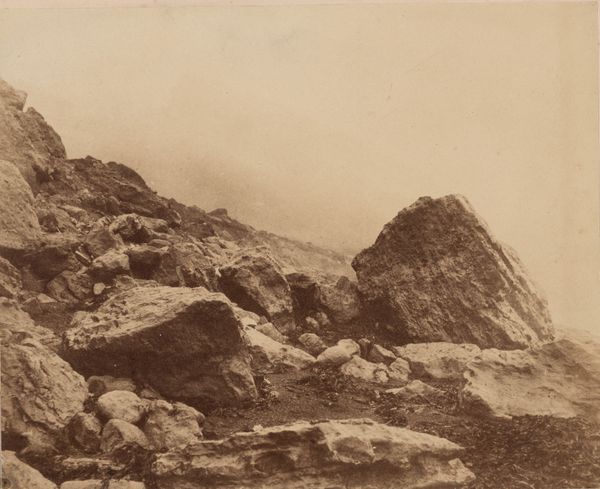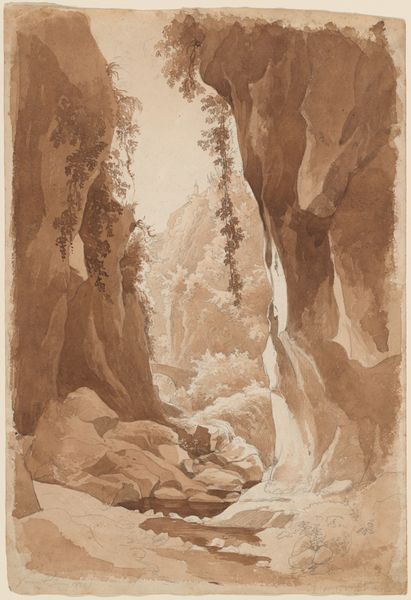
Dimensions: image/sheet: 18.5 × 23.3 cm (7 5/16 × 9 3/16 in.)
Copyright: National Gallery of Art: CC0 1.0
Curator: This captivating image is titled "Banks of a Pool, the Rumbling Bridge at Dunkeld," created around 1853 by John William Dudgeon. It’s a gelatin silver print. Editor: My first impression is its stark, almost forbidding mood. The interplay of light and shadow really emphasizes the raw texture of the rocks. It feels both monumental and claustrophobic. Curator: Absolutely. And it’s important to remember the socio-political context. Mid-19th-century photography was increasingly capturing landscape for public consumption, shaping perceptions of places like the Scottish Highlands as wild and romantic—places to be both admired and, perhaps, tamed. Editor: Yes, I’m struck by the technical aspects too. The process of creating this image—the careful control of chemicals and light on the silver gelatin— it’s an incredibly deliberate act to render such an untamed scene. You've got a real push-pull happening. Curator: Exactly! We see this photograph as an object shaped by material processes, the product of specific labor that renders this "untamed scene", and those details emphasize the control and craft involved, which somewhat contradicts the impression of effortless beauty we sometimes ascribe to landscapes like these. Editor: It definitely plays with romanticism, but I think it brings its focus down from the wide landscape shot of something like Turner’s work into the nitty gritty and industrial components of production. How that process inevitably affects the viewer's interpretations. Curator: And let’s consider how institutions played a role in its dissemination. Galleries exhibited images like this to expose viewers, and they set about shaping cultural taste while giving social value to their creations. This would determine which visual codes of Romanticism get replicated going forward. Editor: The contrast between the tactile quality of the rocks and the smooth water… there's such care being devoted here into manipulating materials! It speaks to that 19th century drive for capturing truth, of rendering detail photographically. Curator: I completely agree. Considering how imagery operates within broader cultural and economic forces gives a deeper understanding of its historical impact and ongoing relevance. Editor: Examining this photograph with respect to materiality and photographic craftsmanship truly enriches one's experience when you compare them with just, say, purely artistic landscape conventions.
Comments
No comments
Be the first to comment and join the conversation on the ultimate creative platform.
